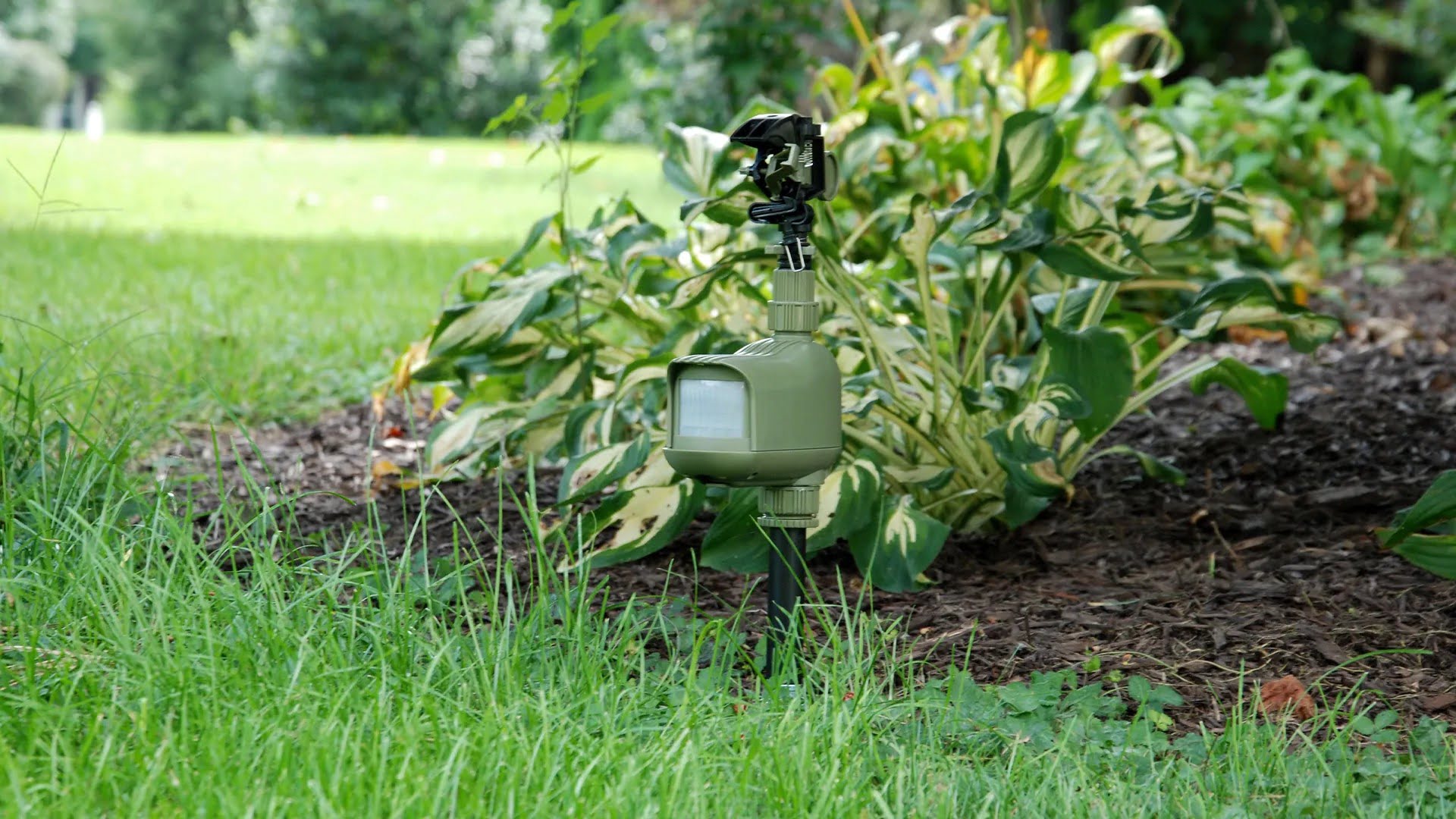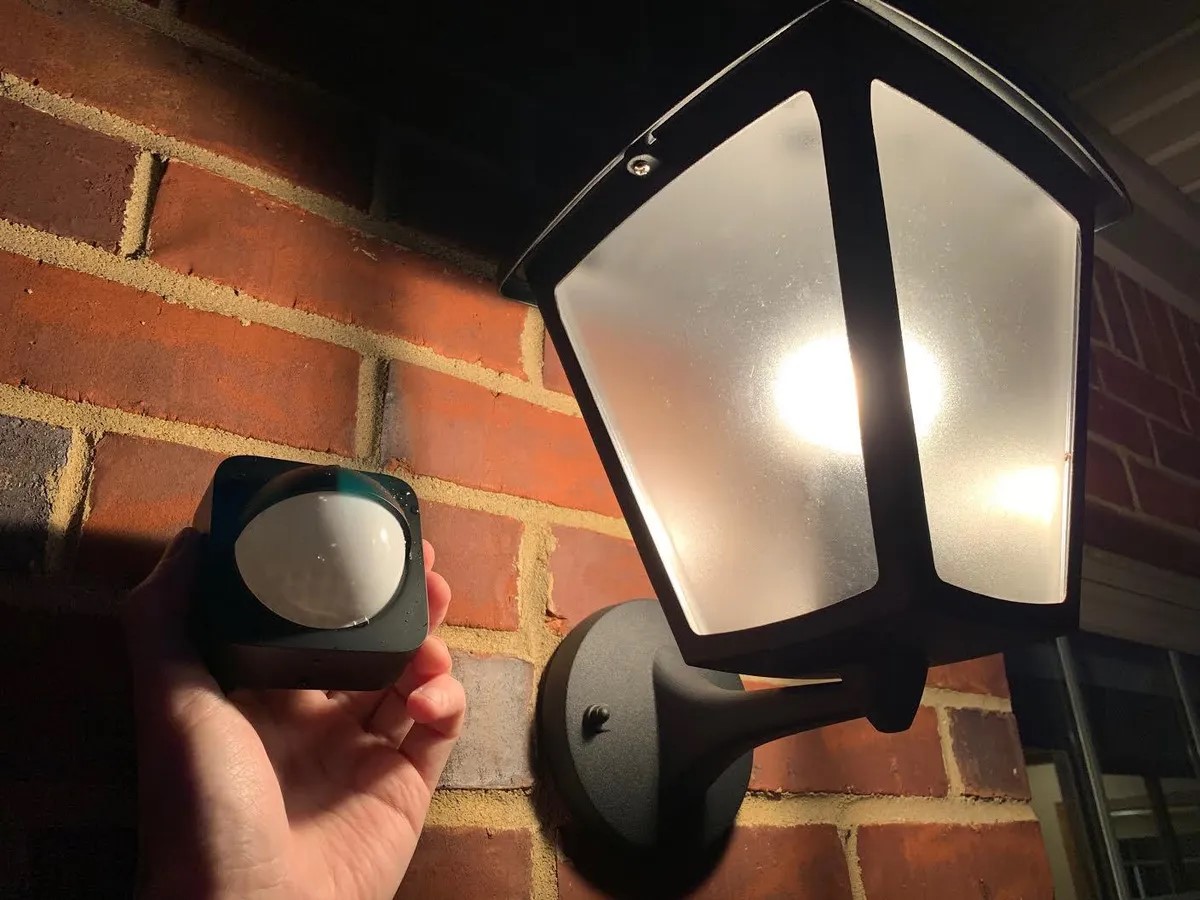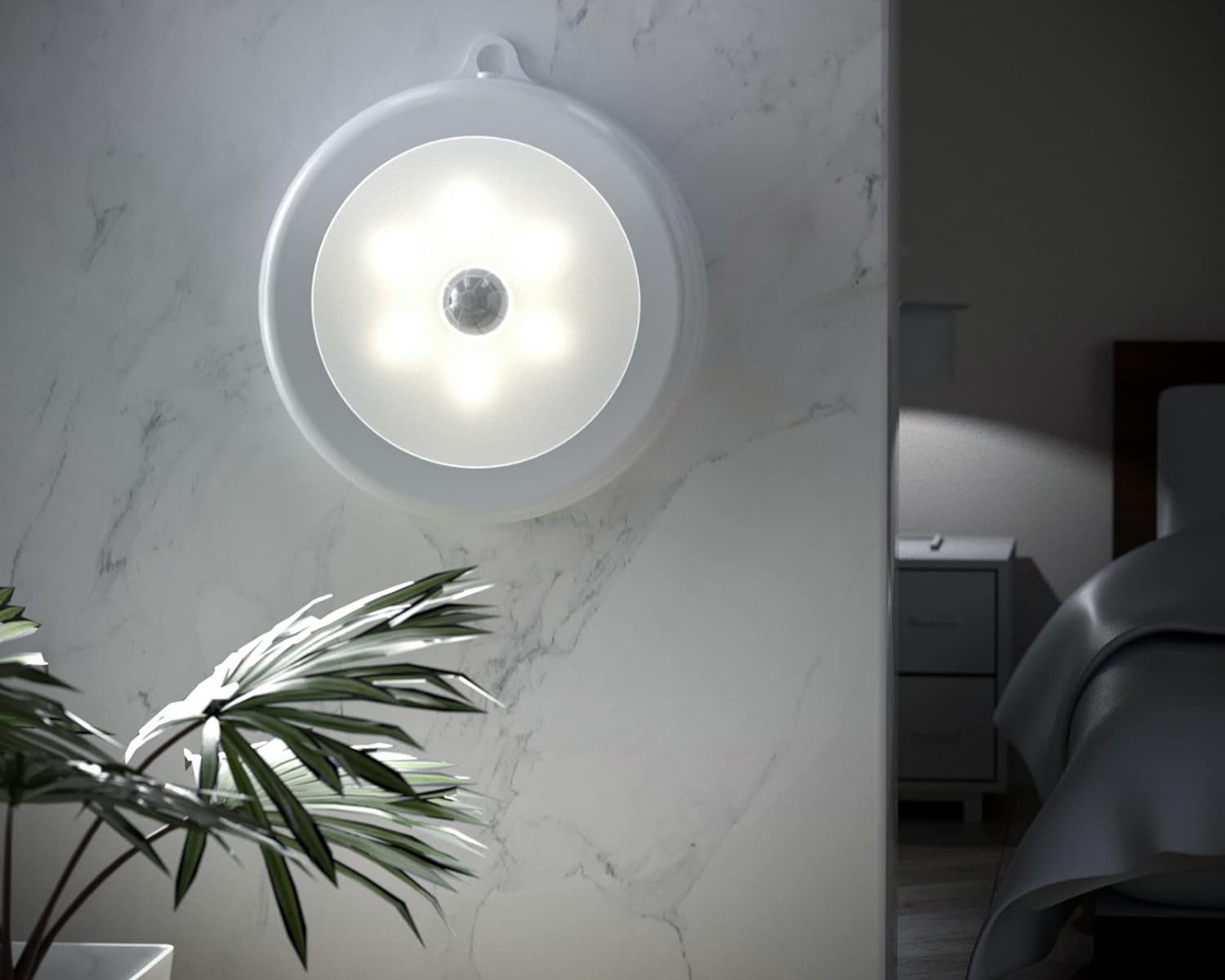Home>Home Security and Surveillance>How To Connect An Alarm Bell To A Motion Detector Lights


Home Security and Surveillance
How To Connect An Alarm Bell To A Motion Detector Lights
Modified: August 27, 2024
Learn how to easily connect an alarm bell to your motion detector lights for enhanced home security and surveillance.
(Many of the links in this article redirect to a specific reviewed product. Your purchase of these products through affiliate links helps to generate commission for Storables.com, at no extra cost. Learn more)
Introduction
Welcome to our guide on how to connect an alarm bell to motion detector lights. Home security is a top priority for many homeowners, and having a robust surveillance system can provide peace of mind. Motion detector lights are a popular choice for enhancing the security of your property, as they automatically detect any movement and illuminate the surroundings. However, by connecting an alarm bell to the motion detector lights, you can further enhance your home security system by adding an audible alert to alert you and your neighbors of potential intruders.
In this comprehensive guide, we will walk you through the step-by-step process of connecting an alarm bell to your motion detector lights. We will cover everything you need to know, from understanding how alarm bells and motion detector lights work to the necessary equipment and tools you will need. By the end of this guide, you will have a clear understanding of how to successfully integrate these two components to create a more robust home security system.
Before we dive into the details, it’s important to note that connecting an alarm bell to motion detector lights requires some basic knowledge of electrical wiring. If you are not comfortable working with electrical components, we recommend contacting a professional electrician who can assist you with the installation. Safety should always be a top priority when working with electricity.
Now, let’s get started and learn how to connect an alarm bell to motion detector lights!
Key Takeaways:
- Enhance home security by connecting an alarm bell to motion detector lights for a comprehensive surveillance system, providing both visual and audible alerts to deter potential intruders.
- Prioritize safety and thorough testing when connecting an alarm bell to motion detector lights, and consider professional assistance if uncomfortable working with electrical components.
Understanding Alarm Bells and Motion Detector Lights
Before we delve into the process of connecting an alarm bell to motion detector lights, let’s take a closer look at these two components and how they function independently.
Alarm Bells
An alarm bell is an electrical device that emits a loud, audible sound when triggered. It is commonly used in home security systems to alert occupants and neighbors of a potential security breach. Alarm bells are typically designed to produce a distinct and attention-grabbing noise, serving as a deterrent to potential intruders.
The operation of an alarm bell involves a simple electrical circuit. When the circuit is closed, usually by the triggering mechanism such as a motion detector or door/window sensor, a current flows through the bell, causing an electromagnet to vibrate rapidly. This vibration creates the familiar ringing sound.
Alarm bells come in various sizes and sound intensity levels, allowing you to choose one that suits your specific needs and preferences. Some models may also include additional features such as adjustable volume controls or built-in sirens for added security.
Motion Detector Lights
Motion detector lights, also known as motion-activated lights or motion sensor lights, are a type of outdoor lighting system that automatically turns on when motion is detected within its range. The primary purpose of motion detector lights is to provide enhanced visibility and deter potential intruders by illuminating the surroundings.
These lights are equipped with built-in sensors that can detect infrared energy emitted by moving objects. When the sensor detects motion, it triggers the light to switch on, illuminating the area. This not only enhances security but also provides convenience by automatically lighting up pathways, driveways, or entryways.
Motion detector lights come in various configurations, including floodlights, spotlights, and wall-mounted fixtures. They are typically adjustable, allowing you to customize the sensitivity and duration of the light based on your specific requirements.
By understanding the functioning of alarm bells and motion detector lights individually, we can now move on to the process of connecting them to create a more comprehensive home security system. In the next section, we will discuss the necessary equipment and tools needed for the installation.
Necessary Equipment and Tools
Before you begin connecting an alarm bell to motion detector lights, it’s important to ensure that you have all the necessary equipment and tools on hand. Here is a list of items you will need:
1. Alarm Bell
Choose an alarm bell that suits your needs and preferences. Consider factors such as sound intensity, size, and additional features like adjustable volume controls or built-in sirens.
2. Motion Detector Lights
Select motion detector lights that are suitable for your outdoor space. Consider the range, sensitivity, and type of lighting (floodlights, spotlights, etc.) required for your specific requirements.
3. Electrical Wiring
You will need electrical wiring to connect the alarm bell to the motion detector lights. Ensure that you have the appropriate gauge and length of wiring to reach from the alarm bell to the motion detector lights.
4. Wire Strippers
Wire strippers are essential for removing the insulation from the wires, allowing for proper connections to be made.
5. Wire Connectors
Wire connectors, also known as wire nuts, are used to secure the connections between the alarm bell and the motion detector lights.
6. Screwdrivers
Depending on the specific alarm bell and motion detector light models, you may need screwdrivers to loosen or tighten screws during installation.
7. Ladder or Step Stool
If your motion detector lights are mounted at a height that requires access, a ladder or step stool will be necessary for installation and adjustment.
8. Safety Equipment
Always prioritize safety when working with electrical components. Make sure to have safety equipment such as gloves and goggles to protect yourself during the installation process.
By gathering these essential items beforehand, you will be well-equipped to connect an alarm bell to motion detector lights effectively. In the next section, we will provide a step-by-step guide to walk you through the installation process.
Step-by-Step Guide to Connecting an Alarm Bell to Motion Detector Lights
Follow these step-by-step instructions to connect an alarm bell to your motion detector lights:
Step 1: Safety First
Prioritize your safety by turning off the power supply to the motion detector lights from the circuit breaker. This ensures you can work on the wiring safely without the risk of electrocution.
Step 2: Position the Alarm Bell
Determine the ideal location for the alarm bell. This is typically near the motion detector lights or in a prominent area where the sound can be heard clearly. Use screws and a screwdriver to secure the alarm bell in place.
Step 3: Mount the Motion Detector Lights
Install the motion detector lights according to the manufacturer’s instructions. Ensure they are securely mounted and positioned to provide optimum coverage of the intended area.
Read more: How To Build A Motion Detector Alarm System
Step 4: Connect the Wiring
Measure and cut the electrical wiring to reach from the alarm bell to the motion detector lights. Use wire strippers to remove approximately 1.5 inches of insulation from the ends of the wires.
Connect the corresponding wires from the alarm bell to the motion detector lights using wire connectors. Match the colors of the wires (usually black to black and white to white) and twist the exposed ends together before securing them with the wire connectors.
Step 5: Secure the Connections
After connecting the wires, use electrical tape to wrap around the connections for added security and to prevent any accidental disconnection during installation.
Step 6: Test the System
Turn the power supply back on from the circuit breaker and test the system by triggering the motion detector lights. The alarm bell should activate simultaneously with the lights turning on.
Step 7: Adjust and Fine-tune
If necessary, make adjustments to the motion detector lights’ sensitivity and duration to suit your preferences. You may need to refer to the manufacturer’s instructions for specific adjustments.
Read more: How To Hook Up A Motion Detector To A Alarm
Step 8: Perform a Final Check
Ensure that all connections are secure and that the system functions properly. Double-check that the alarm bell produces the desired sound when triggered by the motion detector lights.
Following these step-by-step instructions will allow you to successfully connect an alarm bell to your motion detector lights, enhancing the overall security and effectiveness of your home surveillance system.
Testing and Troubleshooting
Once you have connected the alarm bell to the motion detector lights, it is essential to test the system thoroughly to ensure everything is functioning correctly. Additionally, in case you encounter any issues, troubleshooting steps can help identify and resolve the problem. Here’s what you need to know:
Testing the System
To test the system, you can follow these steps:
- Trigger the motion detector by walking or moving within its range.
- Observe if the motion detector lights turn on immediately upon detection.
- Simultaneously, verify if the alarm bell produces the expected sound.
- Repeat the test from different angles and distances to ensure proper functionality.
If the system functions as expected during testing, it indicates a successful installation. However, if any issues arise, troubleshooting may be necessary.
Troubleshooting
If you encounter any problems with the system, here are some common troubleshooting steps:
- Check the power supply and ensure that the motion detector lights are receiving power.
- Inspect the wiring connections between the alarm bell and the motion detector lights. Ensure they are securely connected and properly insulated.
- Verify that the motion detector lights are mounted and positioned correctly. Adjust them if necessary for better detection range.
- Review the motion detector settings to ensure they are configured accurately. Refer to the manufacturer’s instructions for guidance.
- Make sure there are no obstructions or objects blocking the motion detector’s line of sight, as this can affect its performance.
- Consider the sensitivity settings of the motion detector lights. Adjust them accordingly for optimal detection.
- If troubleshooting steps do not resolve the issue, consult the manufacturer’s support or consider seeking assistance from a professional electrician.
Through proper testing and troubleshooting, you can identify and resolve any potential issues with the alarm bell and motion detector lights system. Remember that safety should always be a priority when working with electrical components, so if in doubt, seek professional help.
Now that you have successfully connected and tested the system, you can enjoy the added security and peace of mind that comes with an alarm bell integrated with motion detector lights.
Read more: Why Is My Motion Detector Triggering Alarms
Conclusion
Connecting an alarm bell to motion detector lights is a great way to enhance your home security system. By combining the visual deterrent of motion detector lights with the audible alert of an alarm bell, you can create an effective and comprehensive surveillance solution.
In this guide, we have provided a step-by-step walkthrough of how to connect an alarm bell to motion detector lights. We discussed the importance of understanding the components involved, such as alarm bells and motion detector lights, and highlighted the necessary equipment and tools you will need for the installation process.
Remember to prioritize safety during the installation process, turning off the power supply and taking precautions when working with electrical components. It is always recommended to consult a professional electrician if you are not comfortable or experienced in working with electricity.
Once you have connected the alarm bell to the motion detector lights, don’t forget to test the system thoroughly to ensure everything is functioning as expected. Regular testing and troubleshooting will help identify and resolve any issues that may arise.
By following the steps outlined in this guide, you can create a more robust and effective home security system. The combination of motion detector lights and an alarm bell provides both a visual and audible deterrent to potential intruders, giving you and your family added peace of mind.
We hope this guide has been helpful in guiding you through the process of connecting an alarm bell to motion detector lights. Stay vigilant, stay safe, and enjoy the enhanced security that comes with your upgraded surveillance system!
Frequently Asked Questions about How To Connect An Alarm Bell To A Motion Detector Lights
Was this page helpful?
At Storables.com, we guarantee accurate and reliable information. Our content, validated by Expert Board Contributors, is crafted following stringent Editorial Policies. We're committed to providing you with well-researched, expert-backed insights for all your informational needs.









